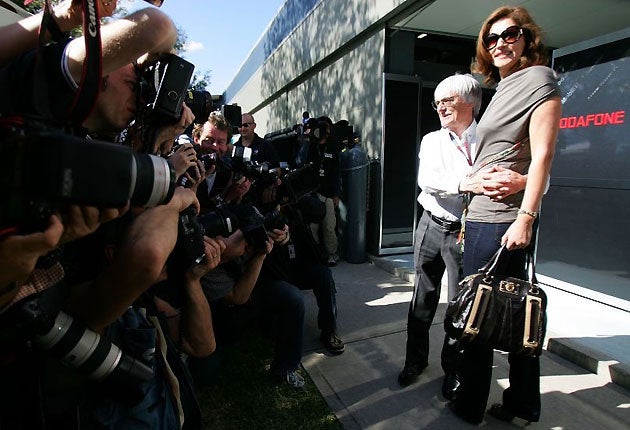Size matters: Seahorses and the Bernie Ecclestone syndrome
In the search for a perfect partner, bigger is definitely better for the male of the species

Male seahorses may come in small packages, but like many short men they think big when it comes to picking out a mate.
Just as Tom Cruise, Bernie Ecclestone and Rod Stewart display a predeliction for taller women, male seahorses are happiest when partnered with a bigger female. And as far as the pot-bellied seahorse is concerned, the bigger the female is, the better, researchers in Switzerland have discovered.
Unlike the majority of creatures in the animal kingdom, scientists found that male seahorses choose their partner instead of desperately hoping their advances will be welcomed. Females, on the other hand, seem content to take whatever size of partner comes their way, although there is evidence that they can be swayed by the size of a male's "brood pouch".
Seahorses have a unique form of reproduction in that it is the male that gets pregnant after the female inserts eggs in his brood pouch, where they implant and mature into juveniles.
Although it is the males which get pregnant, it had been assumed they behaved like any other red-blooded creatures by relentlessly pursuing the opposite sex during the mating season.
But the study, by researchers at the University of Zurich, revealed that it is the males which get to pick a partner and the females who fight among themselves in the pursuit of a mate. The preference among the male pot-bellied seahorses, Hippocampus abdominalis, is so strong that females of the species have evolved to be 15 to 20 per cent bigger than the males.
Scientists believe the preference for a larger female developed because the bigger the mother was, the more eggs she produced, the chances of them developing into juveniles improved and the healthier the young were at birth.
"Egg size, egg number, and offspring size all correlate positively with female body size in Hippocampus, and by choosing large mating partners, male seahorses may increase their reproductive success," the researchers reported in the journal Behavioural Ecology and Sociobiology.
The sexual behaviour of pot-bellied seahorses is thought likely to be common to other species. A fresh study to establish just how common it is will begin this month at Sea Life centres across Europe.
The public will be encouraged to help with the study by recording their observations of seahorses in the centres as they pass the tanks.
Paul Bullimore, a Sea Life marine expert, said: "The Swiss findings lend weight to our own discovery, suggesting that a male is only likely to stick with the same female until a bigger female comes along."
He said it seems likely that ancient humans would have behaved in a similar fashion to the seahorses because a larger woman would indicate healthier breeding stock.
Subscribe to Independent Premium to bookmark this article
Want to bookmark your favourite articles and stories to read or reference later? Start your Independent Premium subscription today.

Join our commenting forum
Join thought-provoking conversations, follow other Independent readers and see their replies